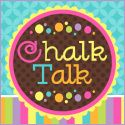
I have learned so much from Kimberly about working with struggling readers and running guided reading groups so I was extremely honored when she asked me to do a guest post on her blog.
It was Kimberly’s Virtual Teaching Expo video that actually inspired me to read the book Catching Readers Before They Fall by Pat Johnson and Katie Keier.
My favorite chapter in the book is called Beyond “Sound it Out”. I am definitely guilty of overusing the phrase “sound it out” when my students get stumped on words they are trying to read when in fact the English language is not consistently phonetic meaning that approximately 40-50% of words cannot be solved by sounding them out. Marie Clay says that sounding words out is not a routine response used by efficient readers therefore asking students to sound words out is oftentimes not helpful or even fair.
There are so many other strategies out there for problem solving how to read an unknown word that it doesn’t seem logical to continue to support young readers by repeatedly saying “sound it out.”
Students who take too much time examining every letter of every word read too slowly causing them to lose the meaning of the text they are reading. When children are able to focus on meaning when they read, they are constantly anticipating the next word in the text, while building their fluency at the same time. The goal is to have students focus on the meaning while also checking letters of the words. They need to internalize the questions Does it make sense? Does it sound right? Does it look right?
Rather than saying “sound it out” here are a few other suggestions for prompting beginning readers…
Read that again and check to see if this part looks right. (slide your finger under the part you want them to check)
Run your finger under the word to see if it looks right to you.
Let the first part of that word help you.
Try that again from here.
Sometimes the letters don’t help us enough so we have to try something else. Let me show you what I’d do next.
Try that again and keep the story in your head as you do.
Let’s get our mouth ready for this word together.
Look right here at the first letter. That will help you start that word.
You got the first part right; now check the ending.
How can you fix the last part of that word?
Try that again but this time touch under the words.
Do you see a part of this word that looks like another word you know?
As you work with your struggling readers this school year be on the lookout for a variety of ways to support young children as they build early word solving strategies and learn to read with fluency and comprehension. Happy Reading!






















Thank you that looks like a book I NEED to read
ReplyDeleteReally needed to read this post tonight. My school is currently involved in a program that uses only phonics as a means of solving unknown words....not what I have learned in my master's reading classes. It's difficult to teach a way you know is not successful!
ReplyDeleteYea, April. You hit it on the head. As a former reading recovery teacher, Marie Clay taught us all so well. I got to see her at Reading Recovery Conference here in Dallas. She has left such a legacy. I would love to read the book, now.
ReplyDelete